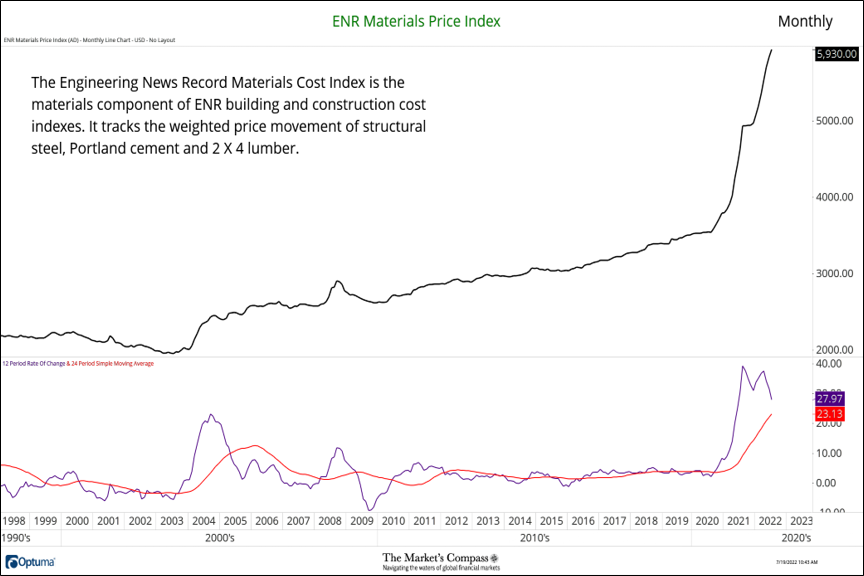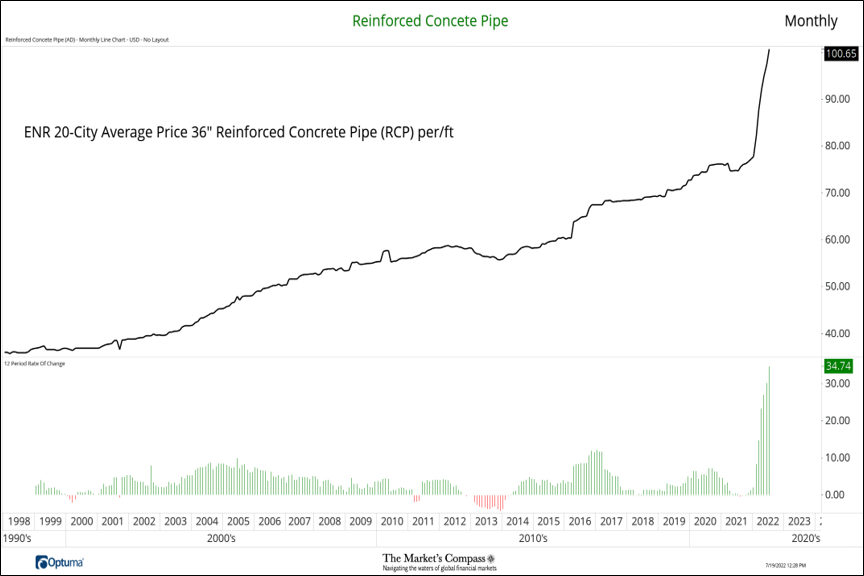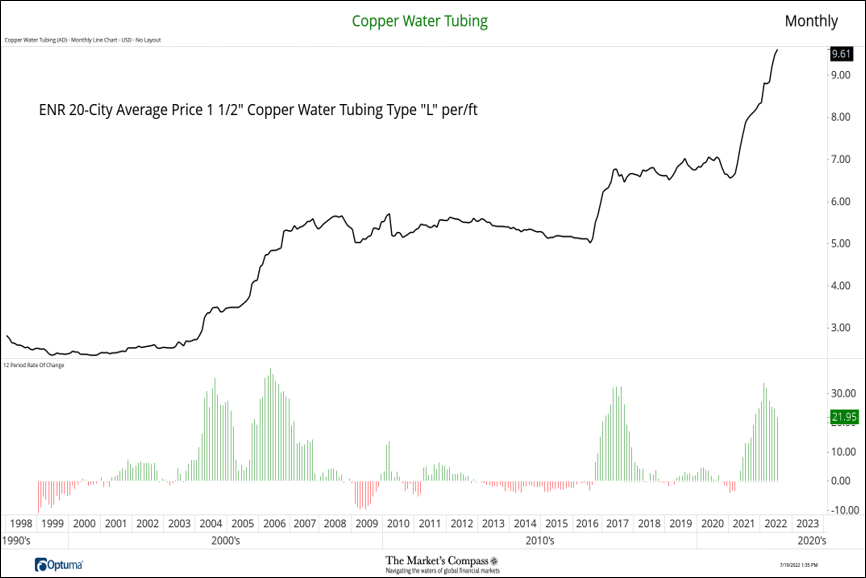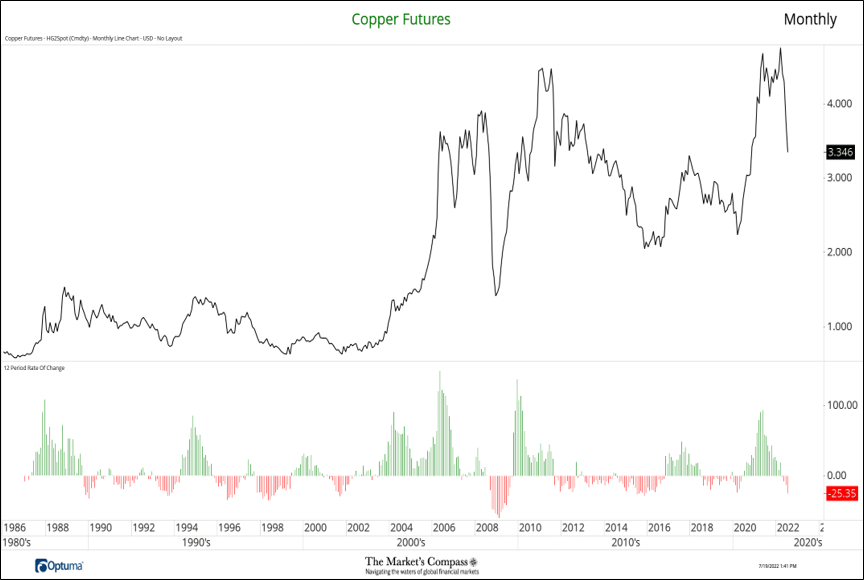Engineering News Record (ENR) history that can be traced back to 1874. The publication has its roots in two separate publications, Engineer & Surveyor and The Plumber and Sanitary Engineer. The first issue of Engineering News-Record was published on April 5, 1917. On January 1st, 1987, the acronym ENR was adopted as the title of the magazine. The charts that follow use data excerpts and are courtesy of ENR magazine that is published 26 times a year. Historical data was pulled from microfiche copies of the magazine obtained from the New York Library. ENR magazine is only a small portion of the products offered by Engineer News Record and we urge readers, particularly those with an interest in engineering and construction costs, take the time to view the ENR website to learn more at…
Charts are courtesy of Optuma whose charting software enables readers to visualize the data. Learn more at
The Market’s Compass will publish select charts periodically when we receive new data from ENR via The Market’s Compass Substack Blog. This week’s publication will be sent to both free and paid subscribers.
ENR Construction Indexes
ENR 20-City Average Pipe Prices
Of the four pipe prices charted above only 1 1/2” Copper Water Tubing has seen a noticeable contraction in the 12-month rate of change (lower panel in the chart) although is remains positive. Considering the recent sharp 3-month pullback in copper prices as measured by the copper futures price (chart below) copper water tubing has not shown any “knock on effect” to recent weakness in the red metal.
Particle Board Underlyment* pulled back from it’s ENR 20-city average record price of $1,361.59 in May and June but this month it bounced back to $1,342.38. When the lumber futures contract (chart below) sold off sharply in the third quarter of last year particle board prices responded to an extent accordingly and this year they have also acknowledged the pull back in futures but certainly not anywhere near to the comparable move in the futures.
*Particle board sometimes called chip board, flake board, strand board, or wafer board are usually sold as 4x8 sheets of wood product panels and is used to sheath houses prior to the application of siding and is used often in sub-flooring. Particle board is made from dry wood particles that are sprayed or dusted with a binder resin, then bonded together with heat and pressure.
In our next edition of Engineering News Record Indexes and Materials Prices we will review the change in aggregates and finished metals prices.
To subscribe to The Markets Compass Technical View Substack Blog go to…













